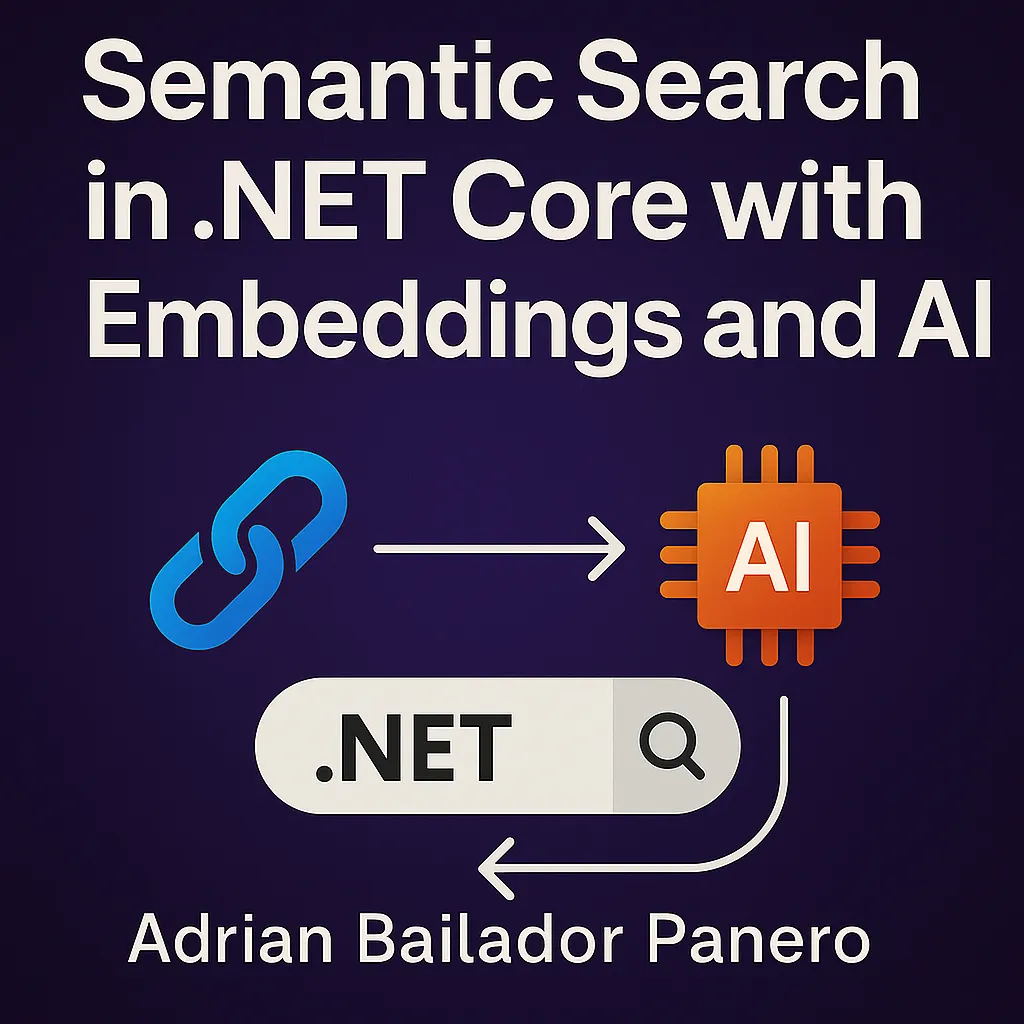
In this tutorial, you’ll learn how to create an API using .NET Core that understands the meaning of text — not just keywords — thanks to the power of OpenAI embeddings. You’ll integrate semantic search, SQLite, Dapper, and .NET in a clean, beginner-friendly project.
💡 Want your search engine to return relevant results even if they don’t contain the exact words? You’re in the right place.
What is Semantic Search?
Traditional search looks for literal keyword matches. Semantic search, on the other hand, understands the intent behind the query.
This is achieved using embeddings — numerical vector representations of text that capture meaning. Once texts are converted into vectors, they can be compared based on similarity (not keywords) to find the closest match.
What Are We Building?
A minimal REST API with two endpoints:
| Method | Route | Purpose |
|---|---|---|
| POST | /documents | Saves a document and generates its embedding automatically |
| GET | /search?q= | Searches for documents similar to the input query using AI |
Technologies used:
- ✅ .NET Core Minimal APIs
- ✅ SQLite (with Dapper)
- ✅ OpenAI embeddings (via HTTP)
- ✅ No frontend — pure backend logic
API Key Management
Never hardcode your OpenAI key. Set it securely as an environment variable:
export OPENAI_API_KEY=sk-xxxxxxxxxxxxxxxxxxxxxxxxxxxxxxxxAccess it in your code:
var apiKey = Environment.GetEnvironmentVariable("OPENAI_API_KEY");▶️ Running the API
To start your API, run:
dotnet run🧪 Testing the API
1. Add Documents (POST /documents)
Using curl:
curl -X POST http://localhost:5000/documents \
-H "Content-Type: application/json" \
-d '{"title": .NET Guide", "content": ".NET Core is a powerful web framework..."}'Or with Postman:
- Method:
POST - URL:
http://localhost:5000/documents - Body → Raw → JSON:
{
"title": ".NET Guide",
"content": ".NET Core is a powerful web framework..."
}2. Search (GET /search?q=)
curl "http://localhost:5000/search?q=microsoft web framework"Example response:
[
{
"title": ".NET Guide",
"content": ".NET Core is a powerful web framework...",
"score": 0.91
}
]🧠 How It Works
Step 1: Embedding Text
The EmbeddingService sends your content to OpenAI’s API:
POST https://api.openai.com/v1/embeddings
{
"model": "text-embedding-ada-002",
"input": ".NET Core is a powerful framework..."
}The API returns a 1536-dimensional vector representing the meaning of the input.
Step 2: Storing in SQLite
The embedding is serialized as JSON and saved in SQLite using Dapper. Each document has:
- ID
- Title
- Content
- Embedding vector
Step 3: Semantic Search
When a user searches, the input is embedded the same way, and then compared to all stored embeddings using cosine similarity — a mathematical measure of how similar two vectors are.
🎯 Cosine similarity measures how “close” two vectors point in the same direction, regardless of their magnitude.
Error Handling
Robust error handling is included to deal with:
- Invalid or missing API key → Returns 401 with error message from OpenAI
- OpenAI API errors → Logged and returned as 500 errors
- JSON deserialization failures → Gracefully handled with proper responses
You can extend this with:
- Logging (e.g. to file or Application Insights)
- Retry policies (e.g. using Polly)
- Input validation
⚙️ Performance Considerations
| Concern | Recommendation |
|---|---|
| Embedding size | text-embedding-ada-002 produces 1536 floats. Keep storage optimised. |
| Batch insertions | Embed and insert multiple documents in batches for performance. |
| Search scale | Current in-memory similarity works for small data. For large sets, use FAISS or pgvector. |
| Vector database | Consider using PostgreSQL + pgvector for scalable production search. |
Source Code
You can find the complete code here:
👉 https://github.com/AdrianBailador/SemanticSearchApp
git clone https://github.com/AdrianBailador/SemanticSearchApp.git
cd SemanticSearchApp
dotnet runFurther Reading
Conclusion
With just a few components and under 200 lines of code, you’ve built an intelligent API capable of understanding language. This is a powerful starting point for building smarter applications — from search engines to recommendation systems.
✨ Want to go further? Add categories, weights, filtering, or switch to a production-grade vector store like pgvector or Pinecone.
Start simple. Scale smart. Think semantically.